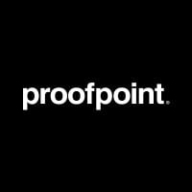

Palo Alto Networks WildFire and Proofpoint Email Protection compete in the cybersecurity category, with Palo Alto showing an upper hand in integration with infrastructure and firewalls, while Proofpoint leads in email-specific protection and threat management.
Features: Palo Alto Networks WildFire offers significant threat detection through integration with Palo Alto's NGFW, comprehensive file analysis, and automated threat verdicts. It is highly considered for zero-day threat protection and application-based firewall features. Proofpoint Email Protection excels with advanced email filtering, strong spam detection capabilities, and business email compromise protection, effectively preventing targeted attacks and providing easy-to-use spam management.
Room for Improvement: Palo Alto Networks WildFire could improve support for on-premises deployment and expand file type compatibility, reducing cloud dependency for legal jurisdictions. Enhancements in Proofpoint could involve more competitive pricing and more effective phishing detection. Additionally, Proofpoint's interface could be streamlined for a more unified administrative experience.
Ease of Deployment and Customer Service: Palo Alto Networks WildFire is adaptable in both on-premises and hybrid cloud environments, while Proofpoint is predominant in public cloud deployments. Palo Alto provides robust direct technical support, though some regions experience responsiveness issues. Proofpoint offers 24/7 availability and swifter request handling, but local support can be improved.
Pricing and ROI: WildFire is perceived as high-priced, justified by its extensive security features with immediate ROI from threat detection. Proofpoint is also seen as expensive but offers scalable licensing for value investment. Users experience immediate ROI due to email threat handling. Both have premium pricing, Proofpoint offering tiered licensing plans, while WildFire stands out by delivering immediate security returns.
The service generates a low rate of false positives, reducing the overhead of managing false positive events.
There is a lack of SLA adherence, and third-party partners do not provide prompt responses.
The service response times are aligned with standards, responding within a few hours based on the problem's criticality.
The support is quite difficult to access promptly.
I am familiar with the granular policy control feature of Proofpoint Email Protection, and I find their support excellent for modifying those policies.
Palo Alto Networks WildFire is scalable, and I give it a nine for scalability.
Wildfire is highly scalable.
Proofpoint is scalable for multi-site organizations with thousands of users.
It performs filtering, malware blocking, and scanning.
The solution is scalable and stable.
The dashboard should provide better visibility, especially in showing how many files are sent to Wildfire and their findings.
It is a very good product.
The support could be improved, as it takes a while to get assistance from the vendors.
Proofpoint could expand its phishing detection capabilities to improve its efficiency.
More security could be implemented.
I believe they still need to improve by consolidating some portals, as currently, you have to log in separately to a few of them.
I would rate it an eight out of ten in terms of affordability.
Customers pay around $90,000 yearly for a 1,000-user organization, with the subscription license being the main expense, apart from implementation fees.
Additional costs do come in, but it enhances security.
Integrating Palo Alto Networks WildFire with various security protocols similar to a firewall has significantly improved the overall threat detection capabilities in our organization.
The most valuable feature of Wildfire is its sandboxing capability for examining suspicious files or locations.
The most beneficial feature of Proofpoint Email Protection is mostly spam filtering; it was very efficient, and we were very happy with the functionality as only relevant emails were allowed for mailboxes.
I appreciate that it's the industry leader, and its firewalling is very easy to manage and implement.
The main feature I find most effective is that Proofpoint Email Protection scans emails and quarantines the doubtful ones.
| Product | Market Share (%) |
|---|---|
| Palo Alto Networks WildFire | 10.7% |
| Microsoft Defender for Endpoint | 9.0% |
| Fortinet FortiSandbox | 8.7% |
| Other | 71.6% |
| Product | Market Share (%) |
|---|---|
| Proofpoint Email Protection | 21.0% |
| Microsoft Defender for Office 365 | 27.6% |
| Mimecast Email Security | 12.5% |
| Other | 38.9% |


| Company Size | Count |
|---|---|
| Small Business | 36 |
| Midsize Enterprise | 17 |
| Large Enterprise | 28 |
| Company Size | Count |
|---|---|
| Small Business | 21 |
| Midsize Enterprise | 13 |
| Large Enterprise | 17 |
Palo Alto Networks WildFire is a highly effective cloud-based advanced threat protection (ATP) solution that organizations in a wide variety of fields trust to help them keep safe from digital threats. It is designed to enable businesses to confront even the most evasive threats and resolve them. It combines many techniques to maximize the level of threat protection available to users.
Palo Alto Networks WildFire Benefits
Some of the ways that organizations can benefit by choosing to deploy WildFire include:
Proactive real-time threat prevention. Organizations that utilize WildFire can take a proactive approach to their network security. Wildfire’s security scanning software is supported by powerful automation that enables it to run 180 times faster than other similar solutions. It also leverages machine learning to spot and address two times more malware monthly than its competitors. Users can solve issues as they arise, which prevents them from suffering severe harm.
A holistic approach to security. WildFire leverages many of the security features and characteristics that can be found in some of the most effective security solutions in a way that provides users with a powerful protective blanket. It combines such things as machine learning, dynamic and static analysis, and a custom-built analysis environment, and enables users to cover many different potential avenues of attack. In this way, organizations can easily detect and prevent even the most sophisticated threats from harming them.
Reduce overhead costs. Using WildFire cuts the expenses that a business incurs. Its architecture is based in the cloud and, as a result, users do not have to purchase hardware to run it. Additionally, those users do not have to pay anything more than a product subscription fee. They can scale it up as they wish and incur no additional costs.
Palo Alto Networks WildFire Features
Some of the many features WildFire offers include:
Third-party integrations. WildFire gives users access to integrations that can enable them to combine Wildfire’s security suite with outside tools. If an organization thinks that they are missing something, they can easily use Wildfire’s third-party integrations to bolster their capabilities. These integrations can connect to many different types of tools, like security information or event management systems.
URL filtering. Organizations can use a URL filtering feature to safeguard themselves against known threats. When this feature is active, it will scan for traffic coming from specific URLs that are known to be malicious. This keeps them one step ahead of those threats that they know about.
Deep analytics. Wildfire comes with the ability to provide users with a detailed analysis of any threat that it finds across all of their network environments. It gives users insight into everything from their natures to the actions that they have performed.
Reviews from Real Users
WildFire is a solution that stands out when compared to its primary competitors. Two major advantages that it offers are the high speeds at which it can analyze network traffic for threats and the accuracy with which it can pick out genuine threats from false positives.
Ahmad Z., the principal consultant at Securelytics, writes, “The analysis is very fast. The intermittent is a millisecond and has a speedy response time.”
Christopher B., the senior systems administrator at a government agency, says, “It gives a more accurate assessment of a virus in terms of whether it's truly a virus, malware, or a false positive. We have some legacy software that could pop up as being something that is malware. WildFire goes through and inspects it, and then it comes back and lets us know if it's a false positive. Usually, when it finds out that it's not a virus, it lets us know that it's benign, and it can exclude it from that scan, which means I don't even have to worry about that one popping up anymore.”
Proofpoint Email Protection provides powerful filtering against spam, phishing, and malware, leveraging effective threat detection and blocking capabilities. This solution integrates smoothly with platforms like Office 365, offering a user-friendly dashboard for seamless operations.
Proofpoint Email Protection focuses on email security, ensuring protection against phishing, malware, and spam. It includes features like URL scanning, anti-phishing, anti-virus protection, and sandboxing for comprehensive threat analysis. Its advanced analytics through TAP and TRAP, along with strong integration abilities, make it appealing for handling email threats. While scalability and ease of deployment are advantages, challenges such as integration in complex environments, the cost, and limited local support require attention. Enhancements in search functionality, email encryption, and improved phishing detection are also needed.
What are the key features of Proofpoint Email Protection?Industries adopting Proofpoint Email Protection include finance, healthcare, and education sectors, which benefit from its robust email security measures. Educational institutions prioritize safe communication for staff and students, while healthcare organizations focus on protecting sensitive patient data. Financial services benefit from preventing data breaches and fraud through advanced threats management.
We monitor all Advanced Threat Protection (ATP) reviews to prevent fraudulent reviews and keep review quality high. We do not post reviews by company employees or direct competitors. We validate each review for authenticity via cross-reference with LinkedIn, and personal follow-up with the reviewer when necessary.